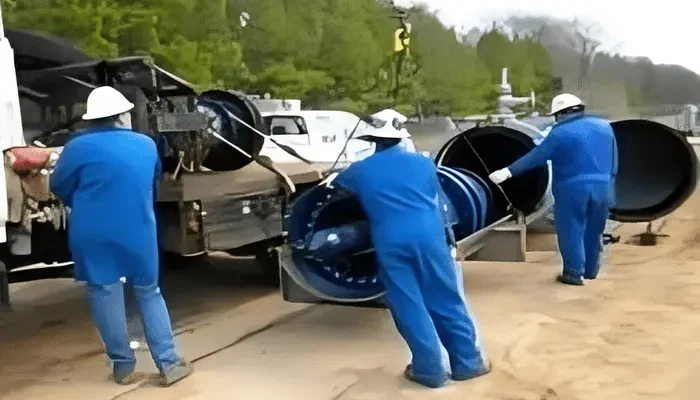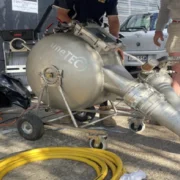Key Takeaways:
- It is essential to understand the importance of pipeline maintenance in ensuring operational efficiency and safety.
- We are exploring innovative technologies that are transforming pipeline inspection and cleaning.
- The role of “pipeline pigs” in modern maintenance strategies.
- Benefits of implementing advanced inspection tools.
Introduction
Pipeline systems are the arteries of industrial operations, conducting vital resources across vast distances. But like any system, they require regular maintenance to function efficiently. Maintenance strategies have evolved over the years, integrating advanced technologies that ensure pipelines remain clear and operational. Among these technologies, pipeline cleaning pigs have emerged as a crucial component in the maintenance toolkit.
As industries continue to innovate, the importance of using advanced tools like pipeline pigs cannot be overstated. These devices are essential for cleaning and inspecting pipelines, ensuring they operate without hitches, and prolonging their lifecycle. In industries like oil and gas, water supply, and chemical transport, maintaining pipelines is not merely about operational efficiency but also about adhering to stringent safety and environmental regulations.
The Necessity of Regular Pipeline Maintenance
Regular maintenance of pipelines is not just a matter of efficiency but also safety. Accumulated debris, corrosion, and other issues can lead to pipeline failure, posing environmental risks and economic losses. It’s essential to keep pipelines clear and clean to avoid such mishaps. According to a report by the Pipeline and Hazardous Materials Safety Administration (PHMSA), over 60% of pipeline failures are due to corrosion and mechanical issues that could be prevented with regular maintenance.
Beyond the immediate financial implications, pipeline failures also have long-term environmental impacts. For instance, an oil spill can contaminate water sources and soil, leading to prolonged ecological damage. Regular maintenance helps to mitigate these risks by ensuring that pipelines are inspected and cleaned routinely. This preserves the pipeline’s integrity and safeguards the surrounding environment.
Introduction to Pipeline Pigs
One of the most innovative tools in pipeline maintenance is the “pipeline pig.” These devices travel through pipelines to be cleaned and inspected. Pipeline pigs come in various types, each designed to perform specific functions such as removing debris, checking for leaks, and even capturing data on the pipeline’s condition. The usage of pigs dates back to the early 20th century, but modern advancements have significantly improved their functionality and efficiency.
For example, cleaning pigs are designed to remove build-up and debris, ensuring the pipeline remains clear and functions smoothly. On the other hand, inspection pigs are equipped with sensors and data collection tools to detect anomalies within the pipeline structure. This dual functionality makes pipeline pigs indispensable in modern pipeline maintenance strategies. Moreover, the data collected by inspection pigs can be analyzed to forecast future maintenance needs, allowing for a proactive rather than reactive approach to pipeline care.
Harnessing Technology for Efficient Pipeline Inspection
Modern technologies have enhanced the capabilities of pipeline pigs. For instance, intelligent pigs equipped with sensors and data analysis tools can detect anomalies within the pipeline structure, providing real-time insights into its condition. This data helps in proactive maintenance strategies, reducing the likelihood of unexpected failures. These intelligent pigs can measure parameters like wall thickness, corrosion levels, and even temperature changes, providing a comprehensive assessment of pipeline health.
Advanced sensor technology can detect minute changes in the pipeline structure, offering a comprehensive assessment of its integrity. Using technologies like Magnetic Flux Leakage (MFL) and Ultrasonic Testing (UT) allows for the non-destructive analysis of pipelines. These technologies can pinpoint small cracks or weak spots that might not be visible through traditional inspection methods. As a result, pipeline operators can address potential issues before they escalate, ensuring the continuous and efficient operation of the pipeline system.
The Future of Pipeline Maintenance
Looking ahead, further technological advancements will continue to revolutionize pipeline maintenance. Innovations such as autonomous inspection robots and enhanced sensor capabilities promise greater efficiency and cost-effectiveness. These robots can operate independently, navigating pipelines and performing complex inspections without human intervention.
Keeping up with these advancements is essential for industries that depend on pipeline systems. One noteworthy development is using AI and machine learning to anticipate pipeline problems in advance and reduce downtime and maintenance costs. AI can forecast probable failure sites and suggest focused maintenance tasks by evaluating enormous volumes of data from prior inspections, guaranteeing the pipeline stays in ideal condition.
Conclusion
Incorporating innovative technologies into pipeline maintenance strategies is essential for ensuring safety, efficiency, and cost-effectiveness. Tools like pipeline pigs exemplify how modern advancements can enhance traditional maintenance practices. By embracing these technologies, industries can safeguard their operations and the environment. The future of pipeline maintenance looks promising, with continuous innovations paving the way for safer, more efficient, and environmentally friendly operations.
Pedrovazpaulo Executive Coaching: Unlocking Potential with Its Power









Comments